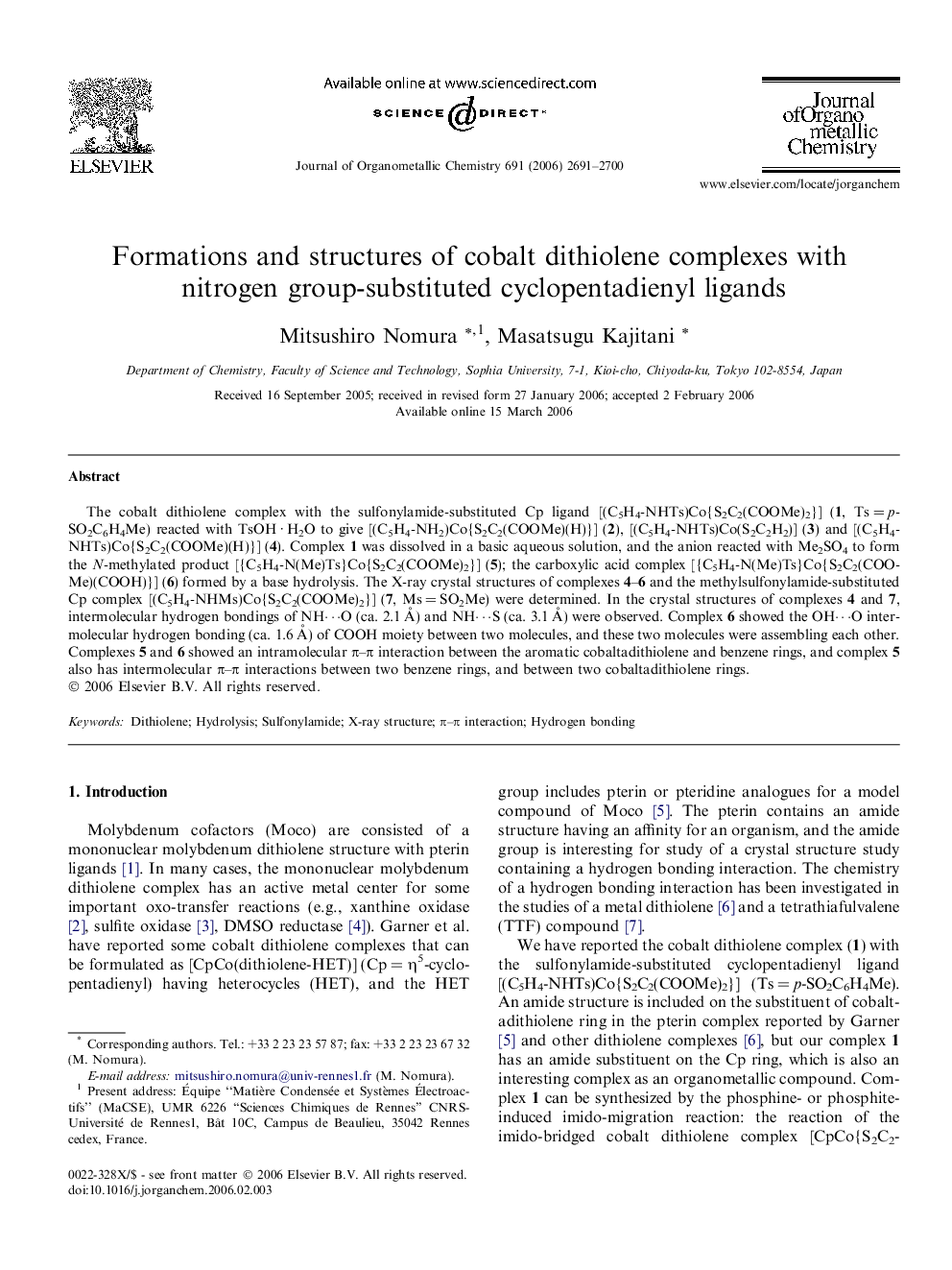| Article ID | Journal | Published Year | Pages | File Type |
|---|---|---|---|---|
| 1328559 | Journal of Organometallic Chemistry | 2006 | 10 Pages |
The cobalt dithiolene complex with the sulfonylamide-substituted Cp ligand [(C5H4-NHTs)Co{S2C2(COOMe)2}] (1, Ts = p-SO2C6H4Me) reacted with TsOH · H2O to give [(C5H4-NH2)Co{S2C2(COOMe)(H)}] (2), [(C5H4-NHTs)Co(S2C2H2)] (3) and [(C5H4-NHTs)Co{S2C2(COOMe)(H)}] (4). Complex 1 was dissolved in a basic aqueous solution, and the anion reacted with Me2SO4 to form the N-methylated product [{C5H4-N(Me)Ts}Co{S2C2(COOMe)2}] (5); the carboxylic acid complex [{C5H4-N(Me)Ts}Co{S2C2(COOMe)(COOH)}] (6) formed by a base hydrolysis. The X-ray crystal structures of complexes 4–6 and the methylsulfonylamide-substituted Cp complex [(C5H4-NHMs)Co{S2C2(COOMe)2}] (7, Ms = SO2Me) were determined. In the crystal structures of complexes 4 and 7, intermolecular hydrogen bondings of NH⋯O (ca. 2.1 Å) and NH⋯S (ca. 3.1 Å) were observed. Complex 6 showed the OH⋯O intermolecular hydrogen bonding (ca. 1.6 Å) of COOH moiety between two molecules, and these two molecules were assembling each other. Complexes 5 and 6 showed an intramolecular π–π interaction between the aromatic cobaltadithiolene and benzene rings, and complex 5 also has intermolecular π–π interactions between two benzene rings, and between two cobaltadithiolene rings.
Graphical abstractThe acid hydrolysis, base hydrolysis and N-methylation of the cobalt dithiolene complex having the sulfonylamide-substituted Cp ligand [(C5H4-NHTs)Co{S2C2(COOMe)2}] (1) gave the cobalt dithiolene complexes 2–6. The crystal structures, intermolecular hydrogen bondings and π–π interactions in these cobalt dithiolene complexes were described.Figure optionsDownload full-size imageDownload as PowerPoint slide
